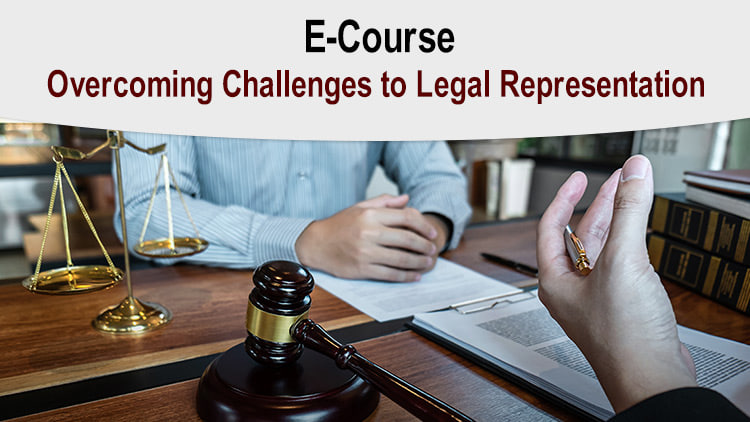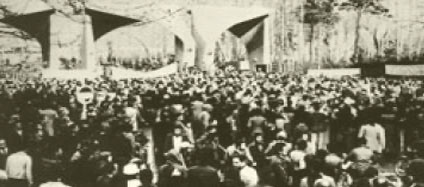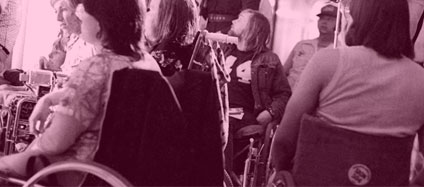Applying Strategy and Tactics (Putting It All Together)
Five Steps to Tactical Innovation – Lesson 6 from Tavaana
Five Steps to Tactical Innovation
1. Identify the problem
2. Build a common vision and goal
3. Define the terrain (Using Tactical Map and Spectrum of Allies tools)
Identify relationships around the identified social problem
Identify allies and opponents on a continuum
4. Explore and select tactics
5. Develop a plan of action for implementation
Learner Objectives
1. Practice the process of adapting a tactic from a different problem to your problem and context.
When we say that tactics are transferable, we mean that they can be adapted for use in contexts and countries other than the ones in which they originated. This does not usually mean that you could or should try to use a tactic – from this website or elsewhere – in exactly the same way it was originally used. You need to evaluate your own situation and resources and assess the risks involved. You may need to combine one tactic with another, or you may find that some component or aspect of a tactic is applicable in your situation, while the tactic as a whole is not.
For additional tactics (in English), see the tactical database on the New Tactics in Human Rights website.
2. Outline the elements of a tactical Plan of Action, the final step of the five steps to tactical innovation.
Planning without action is futile. Action without planning can be fatal.
– Sun Tzu, The Art of War
A Plan of Action is made up of Specific tasks you do to complete your Tactic, moving your Strategy forward to reach your Goal. In this final webinar you will see how the various steps of tactical innovation are combined into an actionable plan.
A plan of action answers these questions:
What is my goal?
What is my target?
What is my chosen tactic?
What are the tasks needed to carry out the tactic?
What steps are needed?
When will it happen?
Who is responsible?
What resources are needed?
3. Observe how to set specific milestones in a Plan of Action that can be celebrated in order to keep momentum during a long campaign.
Many advocacy campaigns can take decades or longer to succeed. There can be tactical failures along the way.
How will you keep the movement going over a long time span? (Remember your most valuable resource – YOU! That also includes self care for all the other people in your movement.)
How will you insure that new leaders may take up where you left off?
A milestone is a significant event or a turning point. Can you identify milestones in your plan of action that could be acknowledged and celebrated?
Lesson 6 Syllabus
Readings
1. Introduction to Lesson 6
2. Read Adapting Tactics, p. 161, New Tactics Book
3. Review Case Study from Lesson 4: “Mock Tribunals”, pg. 74 in the New Tactics Book (NOTE: this case will be used in the webinar)
4. Read Case Studies: choose at least 2 case studies from each section of the New Tactics book that have not been used during the course (at least 8 case studies).
Prevention Tactics
Intervention Tactics
Restorative Tactics
Tactics for Building Human Rights Cultures and Institutions
5. Read at least ONE Case Study from the Tavaana website that has not yet been used in the course.
Pre-Webinar Assignment
1. Use the Adapting Tactics questions in the New Tactics Book, p. 161
2. Review the case examples available in the New Tactics Book (or the case studies on the Tavanna website) to find one that could be adapted to your problem. Answer these questions:
Which tactic did you choose?
For what target and for what goal?
What would have to change to work in your situation?
3. Tactics and targets will be shared – consider the following questions for how tactics will need to be adapted for your context in the Discussion.
How effective is the tactic in reaching the objective outlined for the target?
Is the choice of target and tactic(s) effective in making progress in moving the strategy toward the goal?
What dangers need to be considered or are being encountered?
What can be done to adjust the tactic in order to minimize the danger?
If dangers cannot be minimized what other tactic could be used instead?
What was learned from this course that will be helpful to you in the future?
4. Send to Nancy Pearson for review at nt.tavaana@gmail.com.
Webinar
Date and time: Wed. March 9, 2011, 8pm Tehran time
Nancy Pearson: “Step five – Creating an action plan, applying strategy and tactics to put it all together”
Post Webinar Assignment
1. Fill out Strategy and Tactics Summary Form.
2. Fill out the Course Evaluation Form.
3. Send to Nancy Pearson for review at nt.tavaana@gmail.com.
___
Attribution List “The Center for Victims of Torture – New Tactics in Human Rights Project” as the source for any information used in this document as well as any original attribution provided in this document.
Noncommercial The information is not to be used for profit.
Share Alike If you alter, transform, or build upon this work, you may distribute the resulting work only under the same, similar or a compatible license. And share your alterations, etc with CVT-New Tactics to continue to build the body of knowledge.







